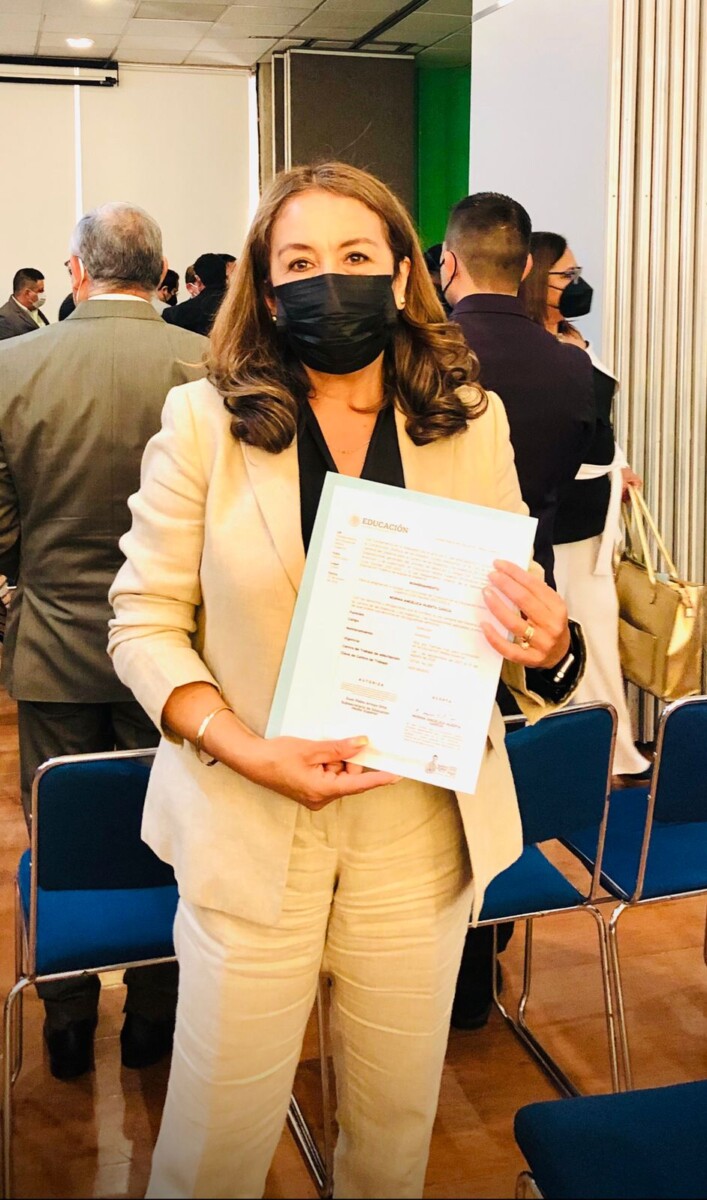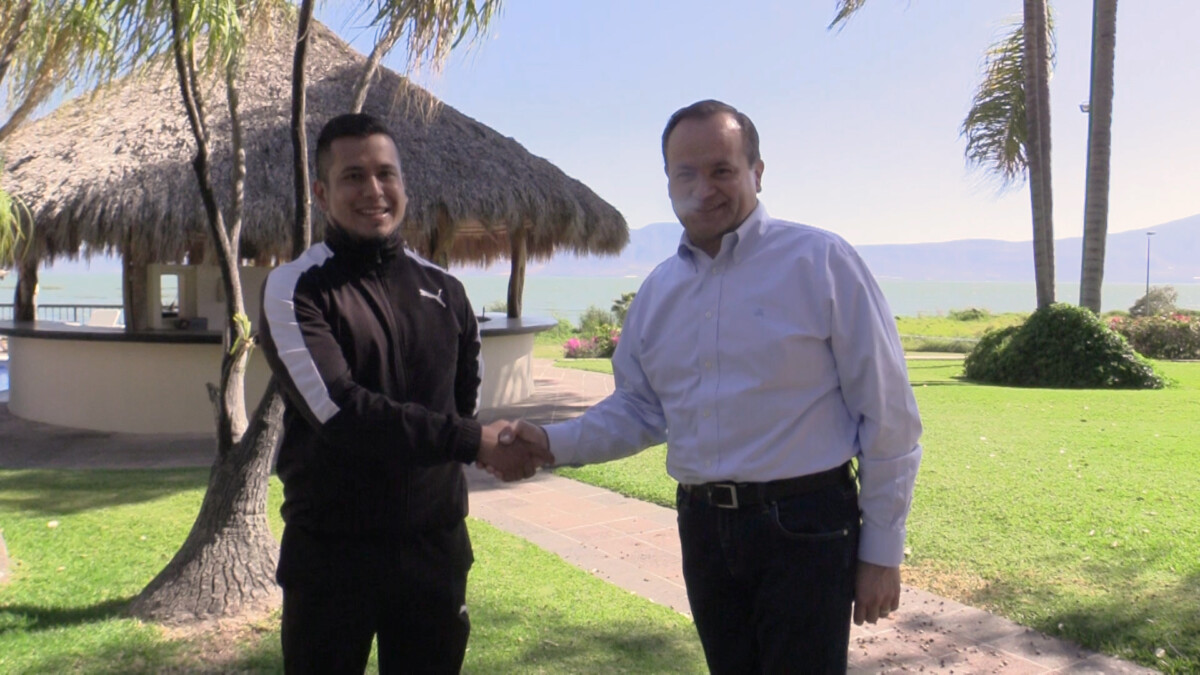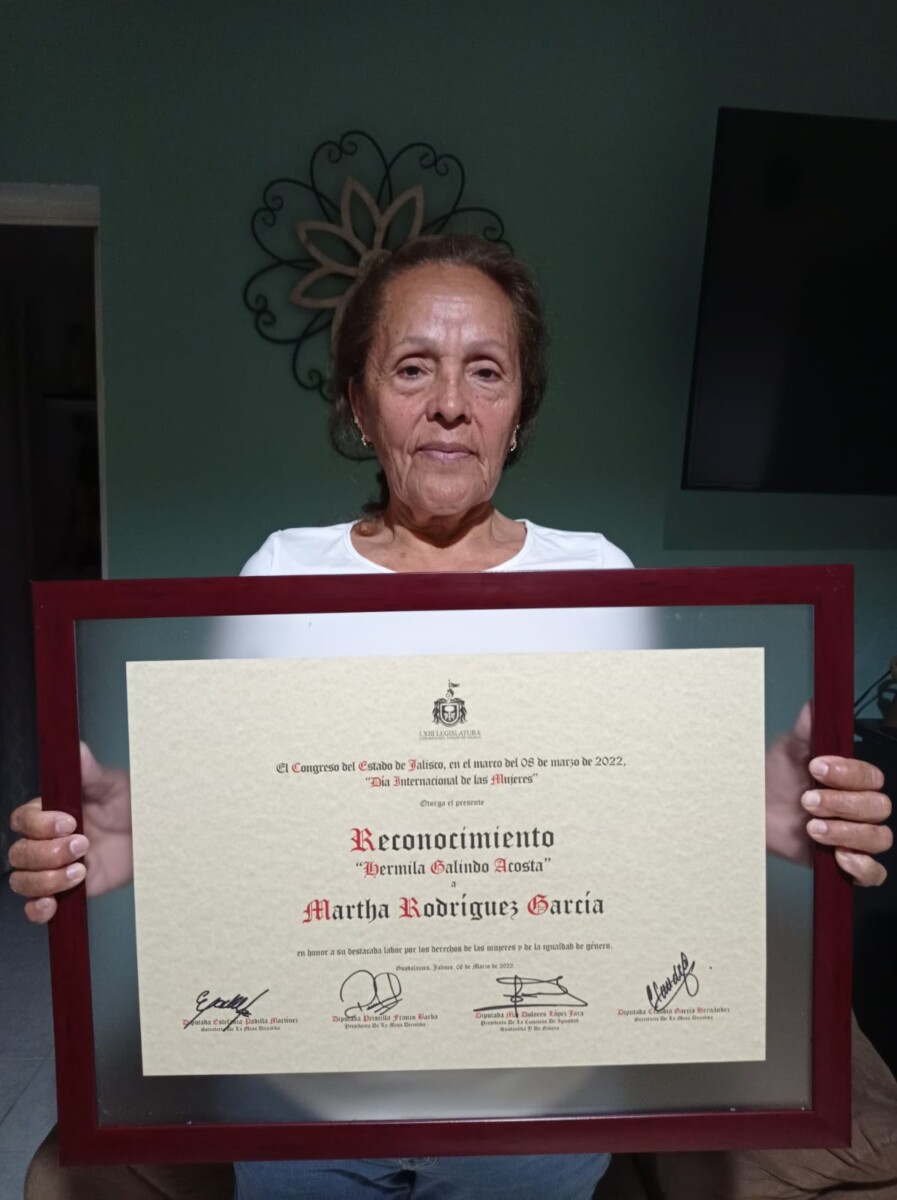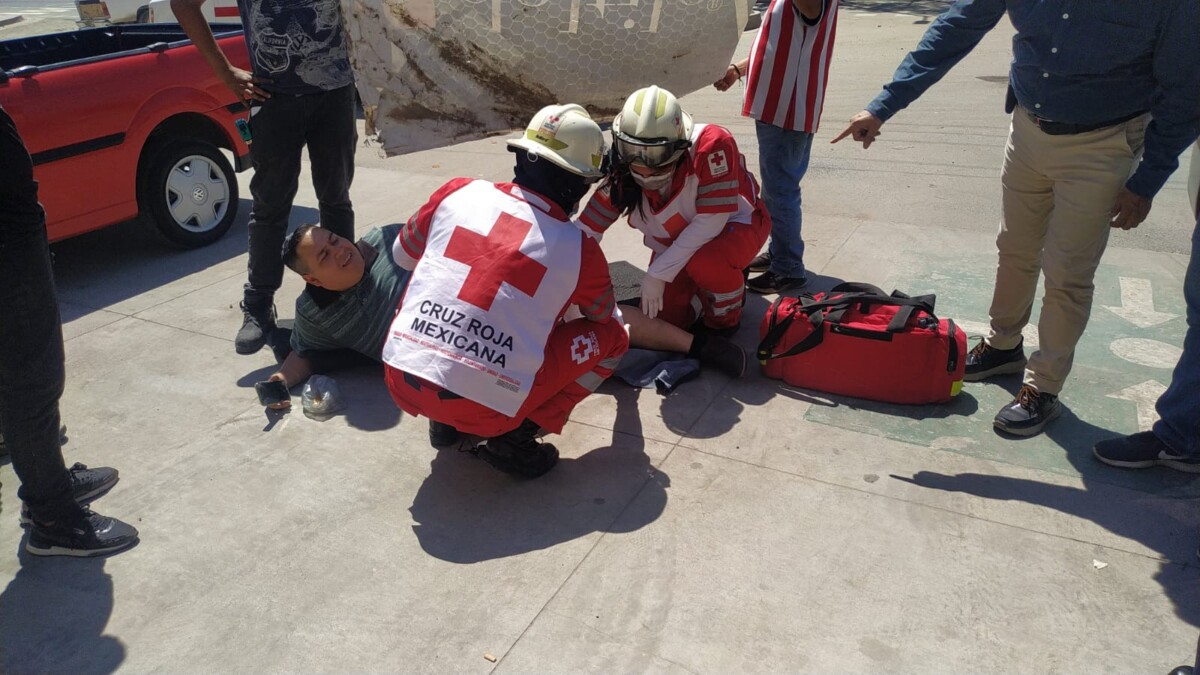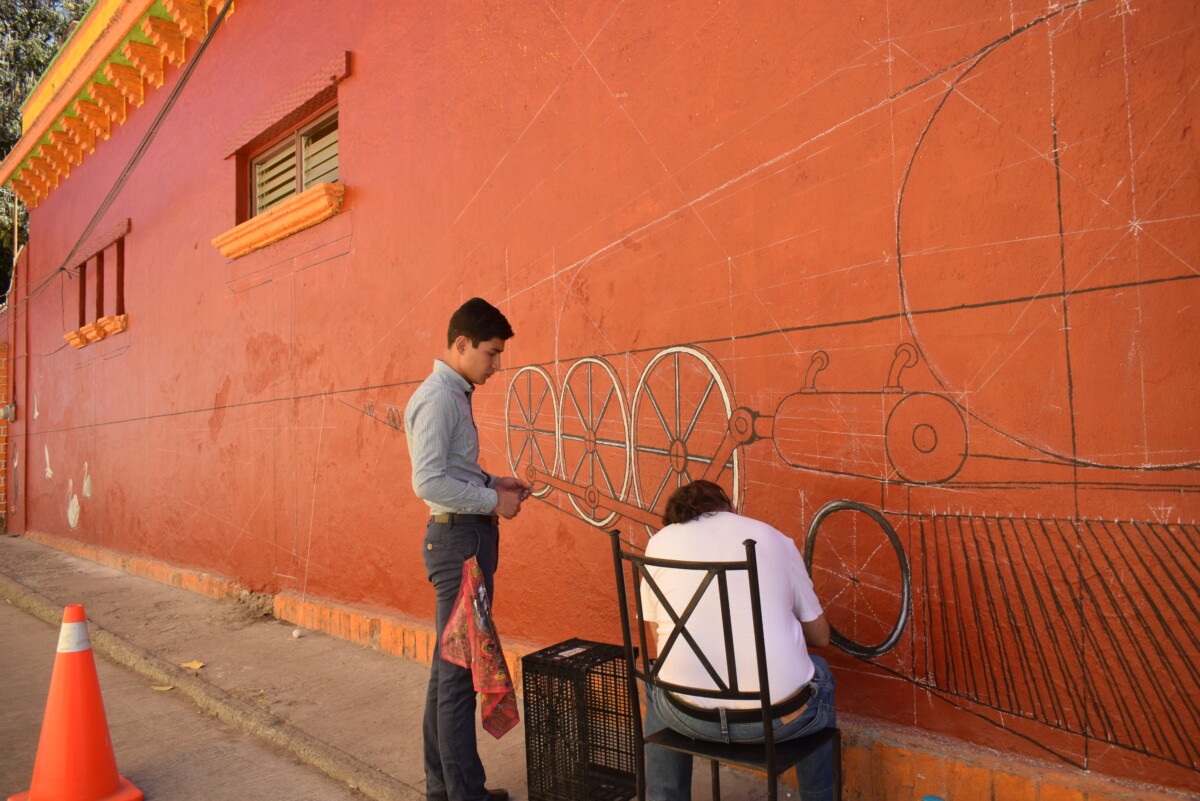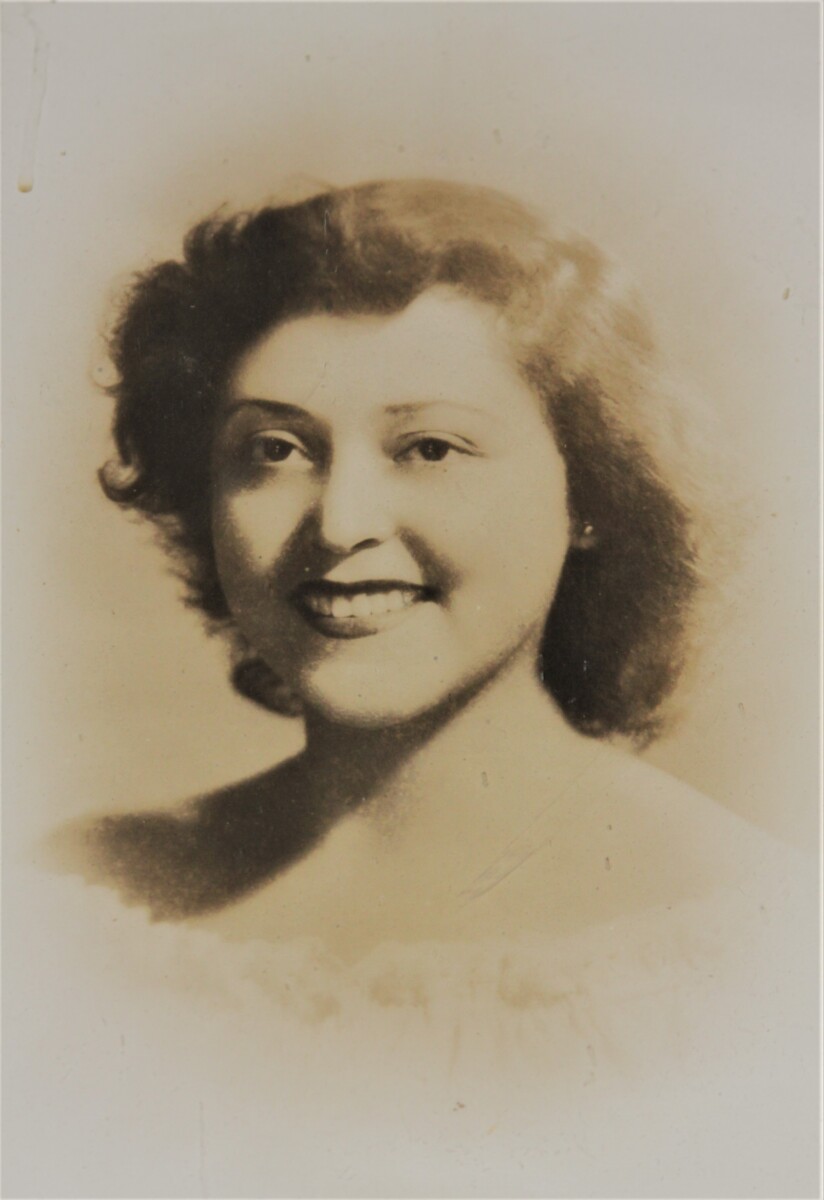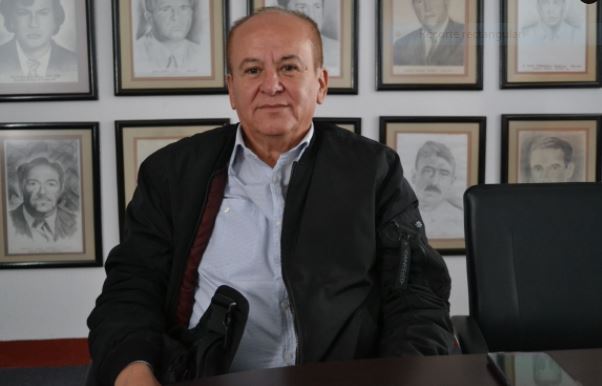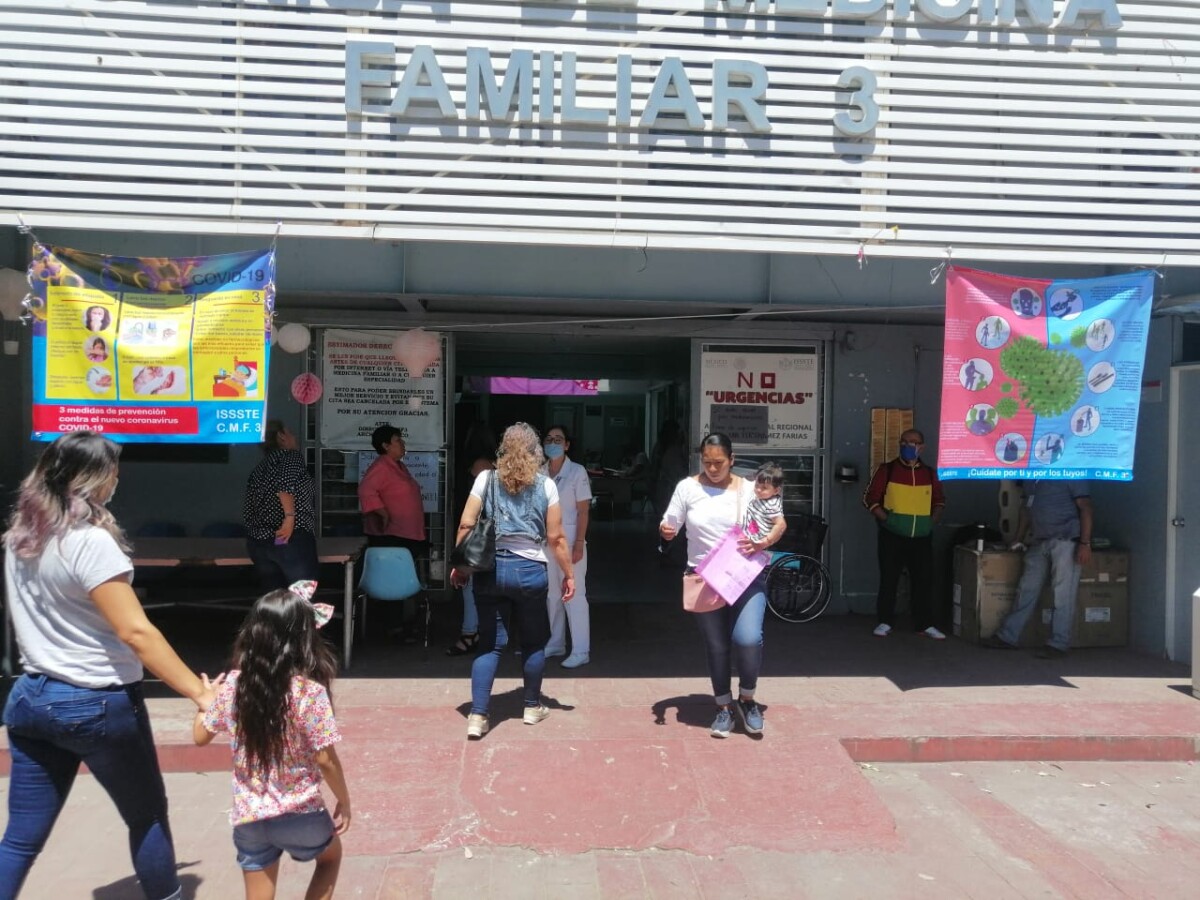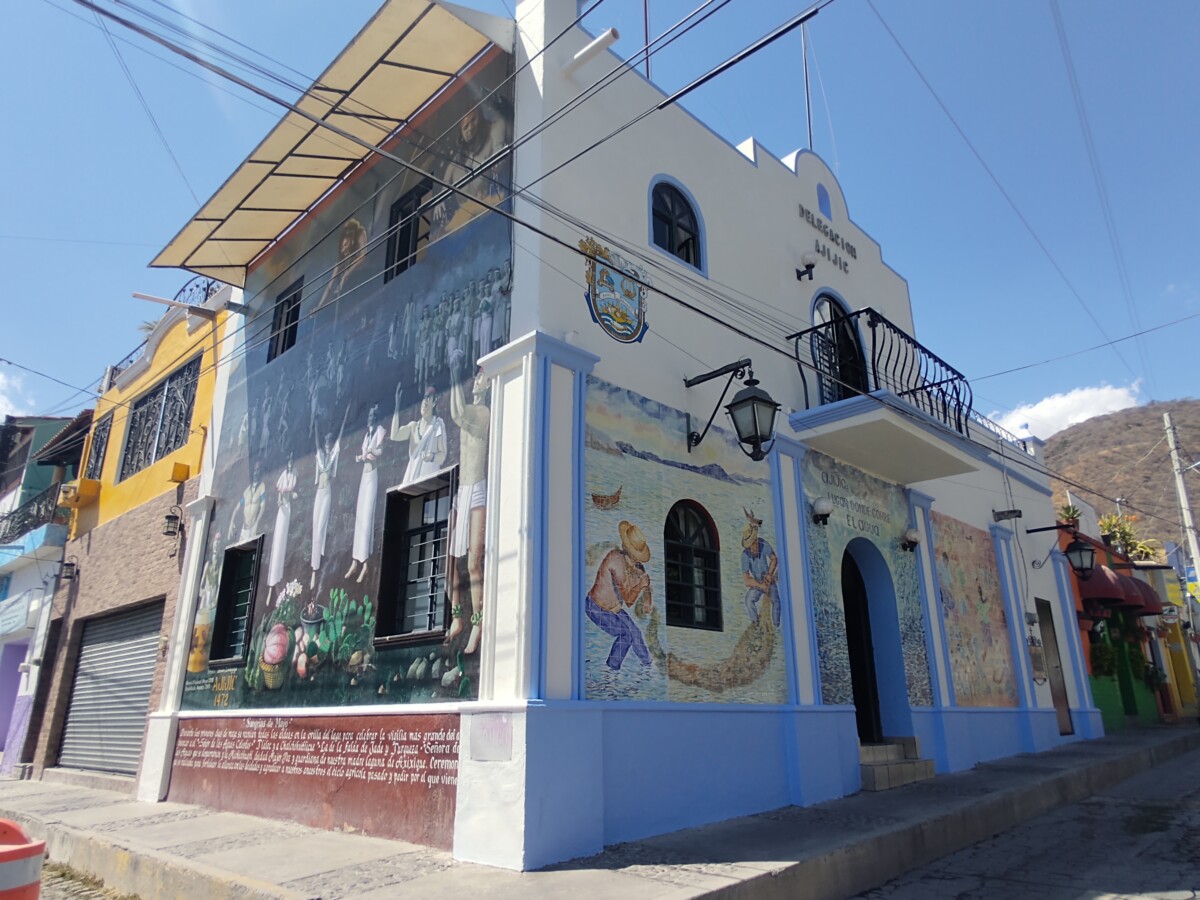en inglés
Norma Huerta is officially appointed director of CETAC 01
Norma Angélica Huerta García, 52, is the new director of CETAC 01 after receiving her appointment February 21. Photo: Courtesy
Héctor Ruiz Mejía(Jocotepec).- After almost five months in the position, Norma Angélica Huerta García received her official appointment as the director of the Center for Technological Studies in Continental Waters of Jocotepec (CETAC 01).
Huerta García, 52 years old with more than 21 years of experience in the educational field, received her appointment on February 21 in Mexico City, along with 233 other directors of schools in 30 states of the country.
The new director has a degree in chemistry, and master’s and doctorate degrees in education. In an interview, she reiterated her commitment to young people in educational matters, assuring that they will always be the school’s priority.
«As an educational institution, our commitment is to provide the community with quality education, promoting the transformation of society; we will always promote learning excellence,» she said.
Huerta García added that the academic commitment will be focused on the new trends of the educational system such as the New Mexican School, with a technological approach implemented in education.
The appointments of the 233 directors were delivered by Guillermo Antonio Solís Sánchez, head of the General Directorate of Agricultural Technological Education and Marine Sciences (DGETAyCM), for the period from September 1, 2021 to August 31, 2025.
Translated by Christalle Dalsted
New director for Chapala national women’s soccer team
Óscar Daniel Cruz Ruiz, new director of the Chapala 2022 Women’s National Team, and municipal president Alejandro de Jesús Aguirre Curiel during the recording of the presentation video.
Jazmín Stengel (Chapala).- Oscar Daniel Cruz Ruiz was presented through a video on social networks on March 10 as the new Technical Director and in charge of the Chapala Women’s National Team for the Jalisco Cup 2022 by president Alejandro de Jesús Aguirre Curiel.
The graduate in Physical Culture and Sports who is also the current director and coach of the Centro Educativo de Fútbol de Alto Rendimiento (CEFAR) in Chapala, will be in charge of selecting and directing the women who will represent the municipality in the third edition of the Copa Jalisco, a state amateur soccer tournament.
Cruz Ruiz expressed his desire to support the sports process as much as the athletes who will be part of it. «We have a lot of enthusiasm and we trust in our generations of girls who have been playing very hard in the municipality, so that everything will flow with good results,» said the new coach.
The first call for the Chapala 2022 National Team auditions was made unofficially a week before the presentation of its Technical Director, supported by the assistant Juan Miguel Siordia Vázquez, however, only four participants came forward.
A day after the presentation, Cruz Ruiz, also a nutritionist, took full charge of the official call on March 11, when he selected more women from Chapala to form the basis of the new team.
President Aguirre Curiel said he has great confidence in Cruz Ruiz, since in addition to being skilled in the field, he has maintained a great love for the municipality. «He has a great trajectory and above all he loves Chapala, that is why I have asked him to be part of this team…. and I know he can do it,» said the mayor.
The members of the Chapala 2022 Women’s National Team will be presented in a later edition.
Translated by Kerry Watson
Martha Rodríguez García recognized for defending the hills of Santa Cruz
Martha Rodríguez García dedicated her recognition to the people who have fought for the defense of the hills El Junco and El Cántaro.
D.Arturo Ortega (Chapala).- For her activism in community-strengthening, her environmental defense of the territory and traditions of her community, Martha Rodríguez García, a native of Santa Cruz de la Soledad, Chapala, was recognized with the «Hermila Galindo Acosta» award, granted by the Commission for Substantive and Gender Equality of the Jalisco State Congress to outstanding women from Jalisco, in the framework of International Women’s Day. Hermila Galindo Acosta (1886-1954) was an early Mexican feminist, suffragist and writer.
On March 8, Rodríguez García received recognition along with nine women from Jalisco and a Civil Association. She has been fighting for eight years to defend El Junco and El Cántaro hills from private interests that seek to divide this natural area.
«I am happy to have received this recognition for the eight-year struggle. We have fought for the environment, for young people, children and the elderly,» said Rodríguez García from the sofa in the living room of her house, who is perhaps the only one with a security and video surveillance system in Santa Cruz de la Soledad.
Since 2014, people outside the community deceitfully bought several properties from residents and “ejidatarios” or communal landowners, with money diverted from the Pension Institute of the State of Jalisco (IPEJAL) for the purpose of building 3,066 single-family homes, 812 duplexes, 400 homes for the elderly, a hotel, clubhouse, golf course, area for horseback riding activities and a hospital contemplated in the luxury megaproject to be built in the hills of El Junco and El Cántaro, in Santa Cruz de la Soledad, thanks to the creation of a trust that would benefit the company «Santa Cruz Inmobiliaria S. A. de C.V.»
Ejido or communally-owned lands are governed by an Ejidal Committee in charge of executing and enforcing the agreements, as well as the representation and administrative management of the ejido.
As Ejido Commissioner, Rodríguez García was able to foresee that the ejido lands would cease to exist, so most of the ejidatarios refused to cede El Cántaro and El Junco. This has meant a battle for the territory that has entailed «stress and fatigue, even for my own children and we always live with the worry of them doing something to us,» she said.
However, it has not only been hardships that Rodríguez García describes, because in spite of all the circumstances and the sacrifices she has had to face, with a serene and calm look; she mentioned that she has also obtained some satisfaction.
The case of the dispute over the hills has been at a standstill since 2016, when two members promoted the suspension of the 2015 Ejidal Committee, and then with police removed the committee that Rodríguez García presided as commissioner. A new Ejidal Committee was then formed in the multipurpose room of the temple of the Virgen de la Soledad.
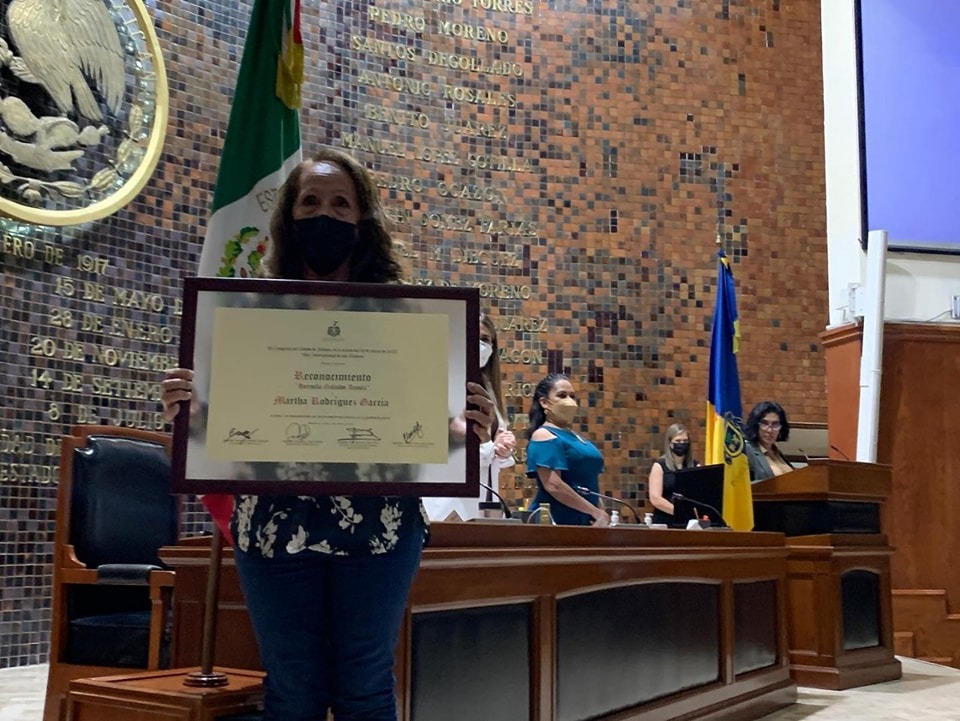
Receiving the «Herminia Galindo Acosta» award at the State Congress.
Once the 2015 Ejidal Committee was removed, an election was called again and in 2018 Rodríguez García was again elected as commissioner, but the National Agrarian Registry did not want to deliver the credentials for that period because there were acts of suspension registered for that period, so, since then the ejido has not met.
Currently they are waiting for a new election to form a new commissariat, but the Agrarian Prosecutor’s Office does not want to deliver the new list of ejidatarios in order to be able to hold the election and seek the least possible obstacles to nullify the elections by the State Government, and some ejido members whose businesses would not be favored by this new slate.
For this reason, it is necessary to wait for the Agrarian Tribunal to request the updated list of ejidatarios in order to carry out the election of the new Ejidal Committee, which process would be carried out in the presence of agrarian organizations, in addition to the Agrarian Attorney General’s Office, which would call for this new election.
Currently there are 177 ejidatarios or registered owners of communal land, of which 55 have passed away and another 44 live in the United States, leaving only 78 ejidatarios living in Santa Cruz according to the latest registry.
Since September 2021 and thanks to the efforts of the Intermunicipal Association for the Protection of the Environment and Sustainable Development of Lake Chapala (AIPROMADES), El Junco has been registered as part of a project to increase water catchment in 252.59 hectares of that territory (about 625 acres) with the support of the United Nations (UN), Coca-Cola and Arca Continental.
Rodríguez García, 67, is a woman of work more than words, and works in El Junco making paths as protective borders. In a few weeks she will reforest with endemic trees such as mesquite, guamúchil, huaje, tepehuaje, palo dulce, papelillo, tepame, osote, among other species to prevent landslides and increase water catchment in the Santa Cruz dam.
She recalls that as a child she always accompanied her parents in their farm work. At that time there were not so many houses, the town was smaller and many of the people supported their families by farming; that is why the hills of El Cántaro and El Junco are so important to her, but the most important thing is to preserve the space as a protected natural area for future generations.
Translated by Kerry Watson
Man shot during robbery
The victim was left on the ground after he was shot. Photo: Courtesy.
Two thieves on a motorcycle, intercepted a resident of Chapala who was driving a company pickup truck, with the purpose of robbing him. When the victim resisted, one of the subjects shot him. The events occurred during midday on Wednesday, March 16 in Riberas del Pilar.
The victim was on Hidalgo Avenue at the intersection with San Mateo Street, Riberas del Pilar, when two people on a green motorcycle intercepted him as he got out of the truck. The victim was carrying a large amount of cash.
The 36 year-old man, a resident of Chapala, tried to defend himself from the robbers, but one of them fired a gun, hitting him in the left knee and taking his belongings.
Paramedics from the Chapala Red Cross arrived at the scene to attend to the victim, who had to be taken to Guadalajara for medical attention. The only thing known about the perpetrators is that they fled towards the downtown area of the town of Chapala.
Translated by Sandy Britton
New mural started in Chapala
The mural is supervised by Juan José Becerra Hernández
Jazmín Stengel (Chapala).- The new mural, which is still untitled, will extend along Niños Héroes street for 148 linear meters (about 485 feet), starting at the intersection with Francisco I. Madero avenue. It is supervised by muralist Juan José Becerra Hernández, author of ‘Prodigio del Agave.’
The objective of the painting is to «freeze in time» the way of life around Lake Chapala between 1900 and 1920. It includes representative scenes such as the train and the train station, now known as the González Gallo Cultural Center, fishing, as well as the hills of Ocotlán and the steamboats that used to transport food from one end of the lake to the other.
“The goal will be to create a landscape that describes Lake Chapala,” said the author of the work. However, the magic of «Juanjo,» as is his nickname, consists of a technique that makes you feel inside the painting. Ten students have participated in the process so far, of which seven still continue.
Translated by Sydney Metrick
Lakeside Chronicles
Seño Cata doesn’t like pictures. ‘I am ugly,» she tells me. But her photograph contradicts her. Photo: María Reynozo.
María del Refugio Reynozo Medina
At 93 years old, Catalina Valencia Navarro walks around the house alone, leaning on a walker with an impeccable face. “I am very happy,» she says with a deep sigh.
She doesn’t need to say it, it is announced by her slow but sure steps, her beautiful luminous eyes and the gentle smile framed by her burnished hair. She wears black shoes that reveal her perfect toes, a long khaki A-line skirt and a soft almond-colored blouse.
Catalina Valencia retired at the age of 82 after 62 years as a teacher. “It’s a mistake to be in teaching if we don’t like it,» she said. In addition to being an elementary school teacher, she co-founded the Magdalena Cueva High School project in 1963 with the principal Antonia Palomares Peña. There she taught English and geography.
The first complete elementary school was started by Palomares because at that time in Jocotepec, elementary school was only up to fourth grade.
“The principal trusted me a lot, she was energetic and very prepared.”
“Cata» as her pupils called her, tells of her experiences with facts and names as if it were yesterday.
«The principal commissioned us to go all over town inviting the children house by house.” They also went to invite children in the towns of San Cristóbal, Zapotitán, Huejotitán and El Molino.
The first high school began in a borrowed building, the José Santana Elementary School. In the afternoon, after the elementary school children had finished their day, the older students attended school.
Mario González Barba taught biology and was the godfather of the first generation of students.
Priest Santiago Ramirez taught drawing and Engineer Jorge Ibarra Galvez taught chemistry.
It was a cooperative high school and the students paid 30 pesos a month. The teachers earned 15 pesos an hour if there was enough money to pay them. A board of trustees made up of people from the community managed the school and was transparent about the resources.
In 1970 the board of trustees managed to build a separate school with contributions from the efforts of the parents, the teachers, and the community, even the masons contributed their labor. The high school was a milestone in the history of Jocotepec. For many, there is a Jocotepec before the high school and Jocotepec after the high school.
In 1982, under the premise of the President of the Republic that there should be secondary schools all over the country, an authority came to Jocotepec to offer a secondary school. The municipal president at that time, responded that there was already a secondary school and allowed its appropriation for the creation of the official secondary school. That action stripped the school from the founding teachers. The teachers were fired. For Valencia Navarro and her colleagues, it was a repudiatory act. “I don’t even want to say the name of that authority because it still hurts me.»
As a high school teacher, something that always filled her with satisfaction was to see those children who, with so many difficulties, achieved their goal. Some students came from other communities, walking across the hill to get to school. The teachers adjusted the classes to the students’ schedules and even taught on Saturdays. Valencia Navarro recalls that a boy from Potrerillos would sleep in his friend’s garage so he could attend school.
«I loved the children from San Cristóbal very much because they were very noble, they left a beautiful mark on me.»
When Valencia Navarro retired, the high school had 300 students. She still remembers them.
“I don’t know if they loved me,» she says, «but many still visit me, and I love them.”
In 1987, «Seño Cata» (short for «Señorita» similar to «Ms.» or Missus) retired with 36 years of service in education. Her mission did not end there. A Zacatecan priest in San Juan Cosalá sought her out, Alberto Macías Llamas, who ran a boarding school. Valencia Navarro went for six months and stayed for 21 years serving the 200 children from rural communities.
Although Catalina was director, for her the most beautiful thing was not the important position, but the closeness with the children in the classroom as a teacher. «I always liked my students to be the first, never the last, and I would get the first places in the achievement contests.»
When I ask her to show me her awards, she agrees, but first says, “Wouldn’t it be a chocantería (impertinent)?”
We walk to the hallway where her degrees and awards hang. Those decorations and the recognition of her students are the most valuable things for her, although they are not proportional to the amount of the pension she receives.
«When I was a child, I saw my mother die. I stuttered and it wasn’t until I was nine years old that I overcame it and was accepted in elementary school.» The classroom was in what is now the Jocotepec municipal marketplace. «We were so poor in the town that we didn’t even have a school. One of the classrooms only had walls and no roof. Some teachers would take the children home and teach them there.» She remembers her teacher Felicitas Palomares with love; she was very important in her childhood. Perhaps that is why «seño Cata» is also a very dear teacher for her students.
If she were born again, she would be a teacher again.
Translated Nita Rudy
Jocotepec’s Public Security Commissioner Resigns
Juan Jesús Hermosillo Moreno, Commissioner of Public Security of Jocotepec for more than three years. Photo: Archive.
The commissioner of Public Security of Jocotepec, Juan Jesús Hermosillo Moreno resigned and was replaced by Ernesto Martín López Carrillo. In a video published on his social networks on March 17, the municipal president of Jocotepec, José Miguel Gómez López, announced the departure of Hermosillo Moreno for «health reasons» and the arrival of Ernesto Martín López Carrillo to take charge of public security in the municipality.
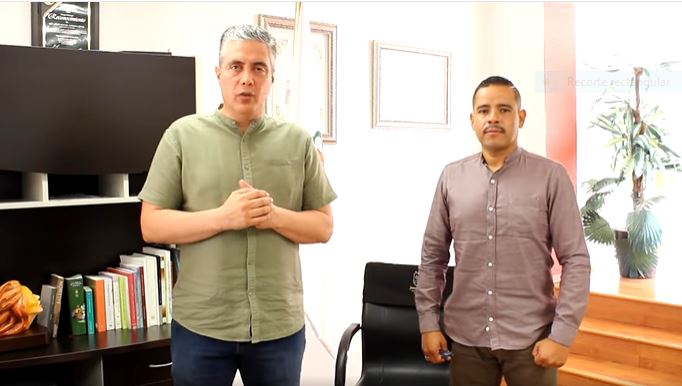
On March 17, President José Miguel Gómez presented the new Commissioner of Pubic Security, Ernesto Martín López as the new Commissioner of Public Security. Photo: Internet.
Gómez López said that the new commissioner comes from Zapopan and has experience in «police matters.» The president also thanked Juan Hermosillo for his more than three years of service at the head of the police station.
Hermosillo’s departure followed a violent incident on March 10 in which two policemen were killed and two firemen were wounded.
Translated by Elisabeth Shields
ISSSTE seeks medical office in Chapala
The beneficiaries will have to continue going to the Family Medicine Clinic 3 in Guadalajara for their consultations and medicines, while ISSST locates a place where the City Council can provide for medical care.
Editor. – After almost two years without medical attention in Chapala, the beneficiaries of the Instituto de Seguridad y Servicios Sociales de los Trabajadores (ISSSTE), Jalisco Delegation, now have a doctor in Chapala; however, there is still no office to provide medical attention.
That is why the Secretary General of Section 16 of the National Union of Education Workers (SNTE), Elpidio Yáñez Rubio, sought out the Mayor of Chapala, Alejandro de Jesús Aguirre Curiel, to request a space for medical attention.
The meeting took place on March 3 and was positive, since City Hall agreed to look for a space out of three options available. In he next few days the options will be evaluated by the municipal authorities to reestablish the medical services for the ISSSTE’s beneficiaries.
After 21 years in which César Flavio Ibarra Soltero provided this service to the beneficiaries of Chapala and surrounding municipalities, Elpidio Yáñez acknowledged the lack of a hospital to provide this care and promised to conduct a census of beneficiaries and based on this, determine whether the construction of a clinic is feasible.
Medical attention for ISSSTE affiliates has not been provided since July 2020 and, for the time being, beneficiaries go to the Family Medicine Clinic 3 in Guadalajara for their consultations and medicines.
Translated by Patrick O’Heffernan
Gunshots provoke chaos in El Molino elementary school
Public security elements arrived at the El Molino delegation after a report of armed persons. Photo: Courtesy.
Gunshots were fired around 10 am Monday, March 14 near J. Vicente Negrete school in El Molino, and armed individuals were seen in the area. Authorities took steps to safeguard students and teachers.
School officials said a normal school day was in progress when students and teachers heard gunshots near the school, and the children became frightened. Some students looked out the window and saw people with weapons hiding near the school. That caused panic among the more than 300 students and educational staff. Everyone took shelter in a classroom designated as a hiding place and remained there for about one hour.
“The children were the ones who saw them hiding,” said one school official. “It was horrible because everyone got scared and we quickly had to take shelter inside a special classroom. We thought the shooting would break out here outside.”
Phone calls came in quickly from concerned parents, but some officials who were interviewed said the police took around 40 minutes to answer the emergency call.
Some parents were upset about the incident and said they were worried about taking their children to school again. By press time for this edition, a large percentage of the students considered attending classes online instead of in person.
“We left the Covid pandemic to return to the pandemic of insecurity,” said one of the parents. “In truth, that claims more lives than the virus.”
Despite the reports and the testimonies of those affected, the Social Communication Department of the Jocotepec City Hall said nothing happened.
Translated by Mike Rogers
Residents criticize change of color in the Ajijic police station
The building of the Ajijic delegation was repainted blue. Photo: Sofía Medeles.
Sofía Medeles(Ajijic).- The new look of the Ajijic delegation building, which began to be painted last week, has generated controversy and diverse opinions among citizens, due to the color used: blue.
The acting delegate, Maximiliano Macias Arceo, said that he is aware of the opinions, both positive and negative, that this change has caused. He commented that the color was chosen from a range of colors suggested by the State Government for Pueblos Magicos venues, among which were dark greens, browns and cream colors, in addition to two shades of blue.
In social networks and in daily conversations of Ajijic residents, there have been diverse opinions about the new painting among those who support the remodeling and those who did not like the change.
«The government just changed political parties and now they change the color of everything to match. So far the malecon, the cemetery and now the police station. They say they are different tones, but the intention is clear. As a Magic Town, they should regulate this change of colors more. Besides, it would be better to invest in fixing streets, street lights, planters, etc., instead of spending liters and liters of blue paint,» commented Antonio.
In contrast, many other residents agree with the modification. «As long as they paint and show a neat image to tourists, it’s fine, that’s what many of us live on. It is something that has to be done and, in my opinion, this new color is in accordance with Ajijic, because it is a place where water abounds in the historical and cultural aspects», expressed Luis.
Finally, Macias Arceo commented that the moldings of the mural that is on the wall of Hidalgo Street, still need to be painted a color that harmonizes with it. Still missing in the main facade of the painting is the upper part, in addition to the shield of the delegation and the logo of Ajijic Magic Town.
Translated by Sydney Metrick
© 2016. Todos los derechos reservados. Semanario de la Ribera de Chapala
